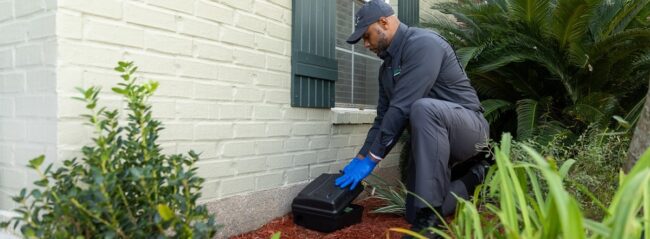How To Bait Them Away From Your House
If you’ve ever had termites, you know how destructive they can be. Not only do they damage your home, but they can also be difficult to get rid of. That’s why termite baiting Brick Township is such a popular method of control.
Termites have an insatiable hunger for wood and moisture, and they can easily gain access to your home through small, unnoticed cracks and crevices. What’s more, termites love eating cellulose-based materials like paper, cardboard, insulation and wooden beams–all materials commonly used in the construction of buildings and houses. Unfortunately, your home is like a buffet for these pests because it offers them the perfect combination of food and shelter.

To make matters worse, termites often don’t need oxygen to thrive; colonies of these ravenous creatures can live fully hidden underneath the hardwood floors or even in the walls of your house without you ever catching notice. With their taste for destruction and abundance in many parts of the world, it’s no wonder that termites are so attracted to our homes!
Invasive species can wreak havoc on an environment they are introduced to, leaving a lasting impact on the local ecology. Through their introduction, an imbalance in the food chain can be created through excessive predators or overwhelming competition for resources. They can also introduce toxins and diseases which can be more difficult to control than if just one species had been affected. Changes in temperature and weather patterns due to climate change often enable invasive species to thrive since their natural predators may not exist in the new environment. Left unchecked, invasive species can drastically damage local biodiversity by reducing populations of native plants and animals that form integral parts of the existing ecosystem. As such, it is important to take steps towards controlling these species before they cause too much damage and potentially cause irreparable harm to the local environment.
